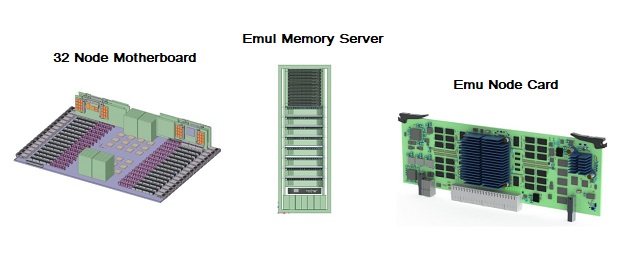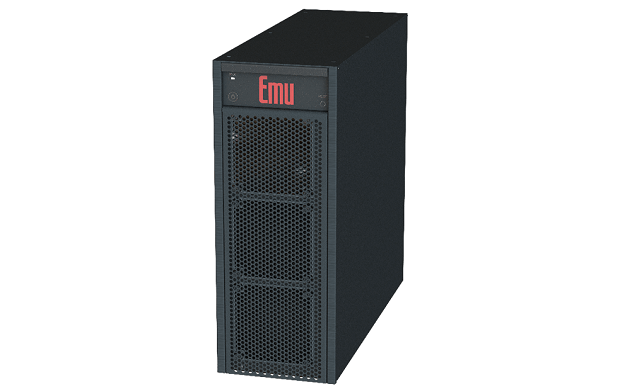* – This article has been archived and is no longer updated by our editorial team –
Below is our recent interview with Anne Vincenti, Vice President of Marketing at Emu Technology:

Q: Could you provide our readers with a brief introduction to Emu Technology?
A: Emu Technology has built a disruptive technology to address new applications and business challenges – we deliver memory-centric computing technology. Specifically, Emu focuses on applications like graph analytics or where data is sparse. You find these types of applications in segments such as social networks, cyber-security, machine learning and even securities analysis. Because of many of these analytics challenges are limited by memory bandwidth, with conventional systems and solutions often requiring workarounds that either delay the time it takes to achieve results or make it impossible to do analysis at the level of detail desired.
Emu, in fact, turns a fundamental computing concept upside down, sending commands to calculate to the data, rather than moving data to a CPU. How? Emu’s architecture mixes many lightweight cores with memory. While Emu’s approach is revolutionary, it is not exotic nor even particularly risky from the technology perspective. Using proven, commercially available technology, Emu is changing the relationship between the two main building blocks of computer systems – processors and memory – and in doing so, eliminating a major bottleneck while creating a more balanced and efficient system.
 Recommended: As Technology Changes loveit coverit Delivers A Comprehensive Mobile Phone Insurance
Recommended: As Technology Changes loveit coverit Delivers A Comprehensive Mobile Phone Insurance
Q: Tell us more about your products?
A: Emu currently delivers a commercially manufactured 8 node tower system, designed for efficient software development. Rather than move data from storage to a CPU, Emu has developed Migratory Memory-Side Processing, which is processing tightly coupled to a distributed shared memory without needing buses or caches. We do this with many lightweight cores designed into Field Programmable Gate Arrays. The use of lightweight “Gossamer Cores” minimizes latency and energy use, resulting in a greener/environmentally friendly computer. This reduction in energy use occurs because unnecessary data is not fetched to fill cache lines and no cache coherency traffic is required. When a calculation needs to occur, the “thread” moves to where the data is. This moves less data than reading a data block from a remote location AND network traffic is one way.
Running Linux, the system handles C, C++ and Cilk applications efficiently. While Emu recommends Cilk, we have an OpenMP project underway to ensure the broadest set of applications can take advantage of our platform.
Find out more about Emu’s breakthrough architecture by downloading our Introduction to Emu Technology’s Migratory Memory-Side Processing white paper.
Q: How do you manage to deal with data that has little or no locality?
A: Today’s cutting edge analytics require real-time processing of massive Big Data sets which have characteristics of weak data locality. These computing challenges are hampered by conventional architectures which were designed in a different era, when data locality was strong – that’s where data accesses come from a single cache line of 64 to 1024 bytes. The Emu design gains performance from weak locality and has no reliance on data adjacency.
In EMU’s Migratory Memory-Side Processing, reading a memory location on a different node causes the compute context to move to the node containing that data, instead sending a read across the network and pulling data back to a CPU. This approach “wins” over conventional computer designs whenever more than one reference occurs at a location. The lightweight Gossamer Cores never stall for long periods waiting for remote reads, and overall utilization is improved. And, the network is simplified because it no longer requires round trip read and response messages.
Q: What makes Cilk a great fit for Emu’s Migratory Memory Side Processing?
A: First and foremost, we needed a good match to our architecture to make the compiler implementation straightforward. We prioritized that it be easy to understand and learn, and, ideally, familiar to most programmers. Since our solution is a fine-grained, massively parallel implementation, we wanted a language which is inherently parallel without requiring that parallelism be invoked through external libraries. Cilk is a language that supports all common threading paradigms and explicitly provides mechanisms for expressing the most irregular cases. Emu extends Cilk with support for atomic operations and libraries for positioning data across nodes in ways that exploit weak data locality.
Cilk is based on C, which makes it relatively easy to compile, and is familiar to most programmers. C is different from Cilk insofar as Cilk is inherently parallel. The parallel concepts in Cilk match well with the underlying concepts in our hardware for invoking parallelism – our hardware has a spawn instruction which corresponds to a Cilk_spawn almost exactly, for example. The hardware implements a shared memory paradigm, which is what Cilk naturally supports.
 Recommended: Ladder Is Changing Life Insurance With Technology And Human-Centered Design
Recommended: Ladder Is Changing Life Insurance With Technology And Human-Centered Design
Q: What are your plans for the future?
A: Unlike other companies that are beginning the development of memory-centric computing solutions, Emu’s memory-centric systems are available today. Development of a second generation Rack system is underway, and each individual Rack will scale to 256 nodes. Multiple Racks can be interconnected to build even larger single system images.
We are working with multiple partners to enhance the range of available software on our products. This includes support for OpenMP working with Cilk to increase the breadth of applications supported by Migratory Memory-Side Processing, supporting key Python libraries and packages running on the lightweight Gossamer Cores for data scientists to utilize the Emu platform, plus support for Machine Learning packages.
Activate Social Media:


